- Home
- Zadie Smith
Feel Free Page 15
Feel Free Read online
Page 15
Given that nobody has given you the rules—given that you have imagined the rules—how can you be indignant when these rules of yours are “broken”? But somehow you are. If Christian Marclay returns to the same film several times—a long “countdown” scene, say, from some bad thriller—it feels like cheating. And because you have decided that the sharp “cut” is the ruling principle of the piece, you’re at first unsure about music bleeding from one scene into another. But stay a few hours and these supposed deviations become the main event. You start to find that two separated clips from the same scene behave like semicolons, bracketing the visual sentence in between, bringing shape and style to what we imagined would have to be (given the ordering principle of the work) necessarily random. Marclay manages to deliver connections at once so lovely and so unlikely that you can’t really see how they were managed: you have to chalk it up to blessed serendipity. Guns in one film meet guns in another, and kisses, kisses; drivers in color wave through drivers in black and white so they might overtake them.
And still The Clock keeps perfect time. And speaks of time. By mixing the sound so artfully across visual boundaries (Marclay’s previous work is primarily in sound), The Clock endows each clip with something like perdurance, extending it in time, like a four-dimensional object. As far as the philosophy of time goes, Marclay’s with Heraclitus rather than Parmenides: the present reaches into the future, the past decays in the present. It’s all about the sound. The more frequently you visit The Clock the more tempted you are to watch it with your eyes closed. Is that the Sex Pistols leaking into the can-can? Nostalgia is continually aroused and teased; you miss clips the moment they’re gone, and cling to the aural afterglow of what has passed even as you focus on what is coming, what keeps coming.
So far The Clock has had few opportunities to play to audiences for its full twenty-four hours, but whenever it has the queues have been almost as long as the film itself. Naturally everyone wants to see midnight. “Why does it always happen at midnight?” asks a young man by a fireplace, underneath a carriage clock. “Because it does!” replies his friend. In the run-up, only Juliette Binoche in France is able to remain calm: quietly, foxily, ironing a bag of laundry, while wearing a bra-less T-shirt. In America everyone’s going crazy. Both Bette Davis and Joan Crawford start building to climaxes of divadom early, at around a quarter to the hour. Jaws going, eyeballs rolling. At ten to midnight Farley Granger looks utterly haunted, though I suppose he always looked that way. At three minutes to midnight people start demanding stays of execution: “I want to speak to the governor!” And the violins start, those rising violins, slashing at their strings, playing on our midnight angst. This works up into a joke: Marclay can cut seamlessly through dozens of films for the last two minutes without manipulating the sound at all: they all have the same screeching violins, the only difference is the key. At midnight a zombie woman pops out of a grandfather clock and gets a big laugh, but I preferred the clip that came a moment later, when a twelve-foot clockwork soldier, swinging out of a bell tower to mark the hour, impales Orson Welles on his giant sword. It reminded me of Owen Wilson’s memento mori: “You’re about to die. You’re on the minute hand of a clock.”
Thirst, Taxi Driver, The X-Files, a lot of Kurosawa, Fatal Attraction, The Prime of Miss Jean Brodie, some Woody Allen, a little Bergman—Marclay’s sources will be very familiar to his New York and London audiences. Maybe if The Clock had been drawn from a more alien culture it would have a different emphasis, but as it is, it’s our film and looks at time our way: tragically. “Do not squander time. That is the stuff that life is made of”—so reads the engraving on an old sundial. We recognize its provenance (Ashley Wilkes’s estate, Gone with the Wind) and accept it as the gospel of our culture. Time is not on our side. Every minute more of it means one minute less of us. Witness Jeff Bridges in The Vanishing (and also some other guy, in the original Dutch version), taking his own pulse and writing it out neatly next to the time. We are tied to the wagon and it’s going in only one direction, whether we like it or not.
Film constantly reenacts and dramatizes this struggle with time: except in film, time loses. We are victorious. Narrative is victorious. We bend time to our will. We tie a man to the floor, put a gag in his mouth and set the clock ticking—but we will decide how fast or slow that clock moves. ESTABLISH TIME: a note written in a thriller. And this is film’s whole challenge and illusion. Without it there is no story, no film. If we believe Marclay, no shot in the history of cinema is as common as the desperate close-up of a clock face. ESTABLISH TIME! But the time thus established has, until now, always been a fantasy, a fiction. The Clock is the first film in which time is real.
A lot of people speak of a crisis in the purpose and value of the fictional realm. The Clock feels to me like a part of that conversation: a factual response to the fantasies of film. It has a very poor predecessor in the TV show 24, which also promised an end to “narrative time” but instead bent to commercial concerns, factoring in ad breaks, and was, anyway, with its endorsement of torture, ideologically vile. With its real-time synchronization The Clock has upped the ante exponentially. Honestly I can’t see how you could up it much more. It’s the art object Sontag was hoping for almost half a century ago in Against Interpretation, which reminds me that this supposed crisis of the Noughties has in fact been going on a long time: “Transparence is the highest, most liberating value in art—and in criticism—today. Transparence means experiencing the luminousness of the thing in itself, of things being what they are.” A very long time. Plato would recognize it.
But what I love about The Clock is that while appearing to pass “beyond” fiction it also honors and celebrates it. Fiction is Marclay’s material; after all, he recycles it. What else is The Clock if not thousands of fictional interpretations of time repurposed to express time precisely. That’s why you don’t feel that you are watching a film, you feel you are existing alongside a film. People even leave the gallery following the conventions of time: on the hour, or a quarter past. No one can seem to stand to leave at, say, 6:07. Most wonderful is listening to people on their way out. “How did he do it, though? You can’t google for clocks. How did he do it then? Did he have hundreds of people or what?”
The awe is palpable, and thrilling because it has become so unusual. A lot of the time, when standing in a gallery, I am aware of two feelings, one permitted, and one verboten. The first is boredom: usually the artist’s subject is boredom (the boredom of twenty-first-century life, etc.) and my reaction is meant to be one of boredom, or, at the most, outraged boredom. The second is “wonder at craft.” I am not meant to have this feeling. Asking how something was made, or having any concern at all with its physical making, or being concerned with how hard the thing might have been to make—asking any of these questions will mark me out as a simpleton. The question is childish, reactionary, nostalgic.
But The Clock is not reactionary, and manages to reintroduce these questions, without being nostalgic or childish. Marclay has made, in essence, a sort of homemade Web engine that collates and cross-references an extraordinary amount of different kinds of information: scenes that have clocks, scenes with clocks in classrooms, with clocks in bars, Johnny Depp films with clocks, women with clocks, children with clocks, clocks on planes, and so on, and so on, and so on. You’re never bored—you haven’t time to be.
Really an essay is not the right form in which to speak of it. A visual representation of some kind would be better; a cloud consensus, or a spectacular graph. It’s hard to convey in words what Marclay does with data, how luminous he makes it. And if this data were all lined up on a graph, what conclusions would we draw? That life is epic, varied and never boring, but also short, relentless and terminal. The Clock is a joyful art experience but a harsh life experience because it doesn’t disguise what time is doing to you. At 2:45 p.m., when Harold Lloyd hung off the face of that clock, I couldn’t access the delight I have felt in the
past watching that fabulous piece of fiction, because if Harold was up on that screen it meant I had somehow managed to come at the same time again, the early afternoon, despite all my efforts to find a different moment, between childcare and work. I looked around the walls of the gallery where all the young people sat, hipsters, childless, with a sandwich in their bags and the will to stay till three in the morning. I envied them; hated them, even. They looked like they had all the time in the world.
FLAMING JUNE
I’m trying to think of the first bits of art I ever saw.* They were all in my mum’s flat. I don’t know why I say “were”—it’s all still there, unchanged. Two small African heads, refined of profile, sit on a bookshelf facing each other. There are many framed posters of elongated Kenyans—or maybe they’re Masai—carrying baskets on their heads or walking past the huge orange lozenge of the sun. There’s a lot of Africana generally, and as a child I never really loved it or loathed it—it was just there, the wallpaper of our lives. The metaphoric wallpaper. The real wallpaper was/is a very heavy geometric Laura Ashley print, against which all the tribal sculpture, masks and prints are set. The remaining unpapered walls are ox-blood red, as is the sofa, as are the various rugs. It looks like someone has spliced Miss Marple’s bedroom with Marcus Garvey’s lounge. Visually there’s a lot going on.
In the relative relief of the bathroom hangs a black-and-white photograph of black and white kids playing in the East End, in the forties or fifties. I’ve always liked that. There is also a pencil sketch of my mother in her cain-rows—an idealized portrait of an already beautiful woman—drawn by the only real artist we knew when I was growing up: a bohemian Australian guy married to an Israeli ballet dancer. This thrilling couple lived in bohemian Hampstead, back when that sentence was still economically possible. I admired his sketch, but it unnerved me: there seemed a lot of undisguised desire in it, and I was always worrying (back when my parents were still married) that my father might finally notice. This same Australian was responsible for the sole oil in the place: a small, heavily framed but delicately painted still life of daisies in a blue-and-white jug. In the context of my family aesthetic it has a quite uncharacteristic minimalism. It was the first “real” painting I ever saw or for which I had any feeling, and even now, if the flat were burning—and all humans accounted for—I think it’s the daisies I’d rescue.
But those daisies represent my mother’s good taste—or perhaps my father’s—and I think the first picture you truly connect with must be the one you choose yourself. And so I wish I had chosen better. It was the first week of college and everyone seemed to be in the same poster shop on Trumpington Street, looking for the print that would best express their personality/attract sexual partners. Ten quid for the poster, fourteen if you took it with a frame. I’m afraid most people chose Klimt, The Kiss. Second favorite: something by Schiele in black stockings. Closely followed by Matisse’s Blue Nude. Slightly more interesting people went for Frida Kahlo. The utterly hopeless simply arrived with their mother’s print of Monet’s bloody waterlilies and hung it crooked above the bed. A hotbed of radical art theory Cambridge was not. But my choice—Flaming June by Frederic Lord Leighton—was no better. Really it was considerably worse, and apart from accurately reflecting a lifelong preoccupation with redheads, when I look at it now I struggle to think myself back into the person who connected with it—who went as far as spending fourteen quid on it! It was an outlier, even at the time. Your Klimts, your Schieles, your Matisses, they were all at least in tune with the nineties aesthetic, their protagonists vaguely resembling that angular young girl of the moment—Kate something-or-other—who was suddenly everywhere, appearing knock-kneed and lank-haired on the front of i-D magazine and The Face. No one wanted anything to do with a big, fleshy, healthy-looking girl with orange hair happily snoozing among a lot of silk and flowers. Looking at it now the decadence of it makes me laugh—also the incongruence. What’s a black girl from Willesden doing with a painting like that? As an attempt to fit in—for I suspect that’s what it was—it was wildly off base anyway. While I was trying to demonstrate my appreciation of British aesthetics, it was de rigueur among my fellow students to have, alongside your modernist poster, a piece of “ethnic” art from your year off: an Asian buddha here, an African mask there. I didn’t have a year off. I had done no good works in Africa or anywhere else. Instead, the summer before arriving, I had, in preparation, read a lot of Oscar Wilde and G. E. Moore, and the poetry of the Barrett Brownings, and Christina Rossetti and—well, you get the idea. It was 1994 but my vision of the institution to which I was heading was basically stuck in the 1890s. Art for art’s sake! This was the carrot I hung in front of myself as I ground through my A-levels. And if, by some miracle, I got the grades, and if Brent Council covered my rent, well, then—I promised myself—then I will become a totally non-utilitarian person. I am going to spend three years on a sofa thinking about truth and beauty in a long skirt and big floppy hat, my long nose in a book, like a sort of black Ottoline Morrell. I will not count pennies and worry like my father, nor go on marches and take up political commitments like my mother. I am going to live for art.
The miracle came to pass. Blessed Brent Council covered my rent. My uncle gave me £250, an act of such staggering generosity that it is, to this day, still legend among my clan. But unbeknownst to my kind Uncle Howard the first thing I did with his money was buy a red silk chemise from Marks and Sparks. The second: a pair of box-fresh Nike Air. The third: Flaming June. A-levels were over. Struggle was over. Willesden was sixty miles hence. From now on I was going to live for love, and art, and food, and silk and nipples and redheads and sleep—lots of sleep. Flaming June is not a very good picture, but it was a perfect reflection of my ridiculous mood, at the time.
“CRAZY THEY CALL ME”: ON LOOKING AT JERRY DANTZIC’S PHOTOS OF BILLIE HOLIDAY*
Well, you certainly don’t go out any place less than dressed, not these days. Can’t let anybody mistake you for that broken, misused little girl: “Eleanora Fagan.” No. Let there be no confusion. Not in the audience, or in your old man, in the maître d’, or the floor manager, the cops, or the goddamn agents of the goddamn IRS. You always have your fur, present and correct, hanging off your shoulders just so. “Take back your mink, take back your pearls.” But you don’t sing that song, it’s not in your key. Let some other girl sing it. The type who gets a smile from a cop even if she’s crossing Broadway in her oldest Terylene housedress. You don’t have that luxury. Besides: you love that mink! Makes the state of things clear. In fact—though many aren’t hip to this yet—not only is there no more Eleanora, there isn’t any Billie either. There is only Lady Day. Alligator bag, three rows of diamonds nice and thick on your wrist—never mind that it’s three o’clock in the afternoon. You boil an egg in twinset and pearls. They got you holed up in Newark for the length of this engagement and one day the wife of the Super says to you: “So you can’t play New York no more, huh? Who cares? To me, you always look like lady.” Nobody can deny. She’s Italian. She gets it. No judgment. She says: “I look after you. I be your mother.” God bless her, but your daughter days are done. And if a few sweet, clueless bobby-soxers, happy as Sunday, stop you on 110th to tell you how much they loved you at Carnegie Hall, how much they loved you on The Tonight Show, try your best not to look too bored, take out your pearl-encrusted cigarette box and hand them a smoke. Girl, you must give away twenty smokes a day. You give it all away, it streams from you, like rivers rolling to the sea: love, music, money, smokes. What you got, everybody wants—and most days you let ’em have it. Sometimes it’s as much as you can do to keep a hold of your mink.
• • •
It’s not that you don’t like other women, exactly, it’s only that you’re wary. And they’re wary of you right back. No surprise, really. Most of these girls live in a completely different world. You’ve visited that world on occasion but it’s not home. You’re soon back on the road. Meanwhile
they look at you and see that you’re unattached—even when you’re hitched—they see you’re floating, that no one tells you when to leave the club, and there’s nobody crying in a cot waiting for you to pick them up and sing a lullaby. No, nobody tells you who to see and where to go, or if they do you don’t have to listen, even when you get a sock to the jaw. Now, the women you tend to meet? They don’t know what to do with that. They don’t know what to do with the God-blessed child, with the girl that’s got her own, who can stay up drinking with the clarinet player till the newspaper boys hit the corners. And maybe one of these broads is married to that clarinet player. And maybe the two of them have a baby and a picket fence and all that jazz. So naturally she’s wary. You can understand that. Sure. And you’ve always been—well, what’s the right term for it? A man’s lady? Men are drawn to you, all kinds of men, and not just for the obvious. Even your best girlfriends are men, if you see what I mean, yes, you’ve got your little gang of dear boys who aren’t so very different from you, despite appearances: they got nobody steady to go home to either. So if some lover man breaks your heart, or your face, you can trust in your little gang to be there for you, more often than not, trust them to come round to wherever you’re at, with cigarettes and alcohol, and quote Miss Crawford, and quote Miss Stanwyck, and make highballs, and tell you that you really oughtta get a dog. Honey, you should get a dog. They never doubt you’re Lady Day—matter of fact they knew you were She before you did.
You get a dog.
• • •
Women are wary, lover men come and go and mostly leave you waiting, and truth be told even those dear boys who make the highballs have their own thing going on, more often than not. But you’re not afraid to look for love in all kinds of places. Once upon a time there was that wild girl Tallulah, plus a few other ladies, back in the day, but there was no way to be in the world like that, not back then—or no way you could see—and anyhow most of those ladies were crazier than a box of frogs. Nobody’s perfect. Which is another way of saying there’s no escape from this world. And so sometimes, on a Friday night, after the singing is over and the clapping dies down, there’s simply no one and nothing to be done. You fall back on yourself. Backstage empties out, but they’re still serving. You’re not in the mood for conversation. Later you’ll open your vanity case and take a trip on the light fantastic—but right at this moment you’re grateful for your little dog. You did have a huge great dog, a while back, but she was always knocking glasses off the side tables and then she went and died on you, so now you got this tiny little angel. Pepi. A dog don’t cheat, a dog don’t lie. Dogs remind you of you: they give everything they’ve got, they’re wide open to the world. It’s a big risk! There are people out there who’ll kick a little half-pint dog like Pepi, just for something to do. And you know how that feels. This little dog and you? Soul mates. Where you been all my life? He’s like those dogs you read about, that sit on their master’s grave for years and years and years. Recently you had a preview of this. You were up in the stratosphere, with no body at all, floating, almost right there with God, you were hanging off the pearly gates, and nobody and nothing could make you come back—some fool slapped you, some other fool sprayed seltzer in your face—nothing. Then this little angel of a dog licked you right in your eye socket and you came straight back to earth just to feel it and three hours after that you were back on a stage, getting paid. Dogs are too good for this world.

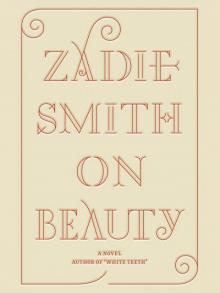 On Beauty
On Beauty Nw
Nw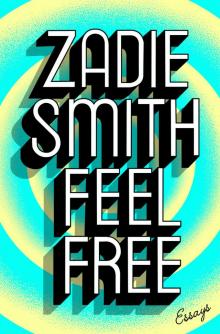 Feel Free: Essays
Feel Free: Essays The Book of Other People
The Book of Other People White Teeth
White Teeth Changing My Mind: Occasional Essays
Changing My Mind: Occasional Essays N.W.
N.W. Swing Time
Swing Time The Embassy of Cambodia
The Embassy of Cambodia The Autograph Man
The Autograph Man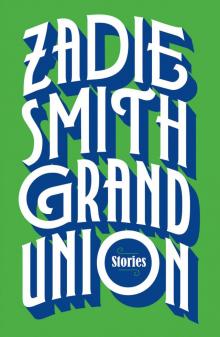 Grand Union
Grand Union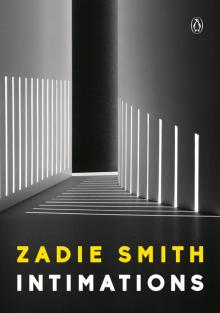 Intimations
Intimations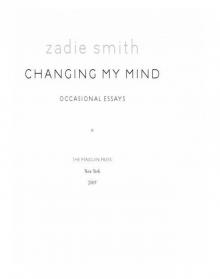 Changing My Mind
Changing My Mind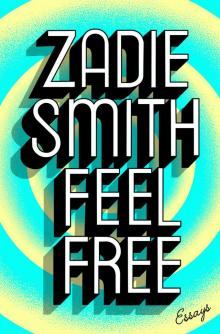 Feel Free
Feel Free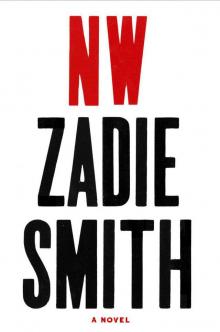 NW: A Novel
NW: A Novel